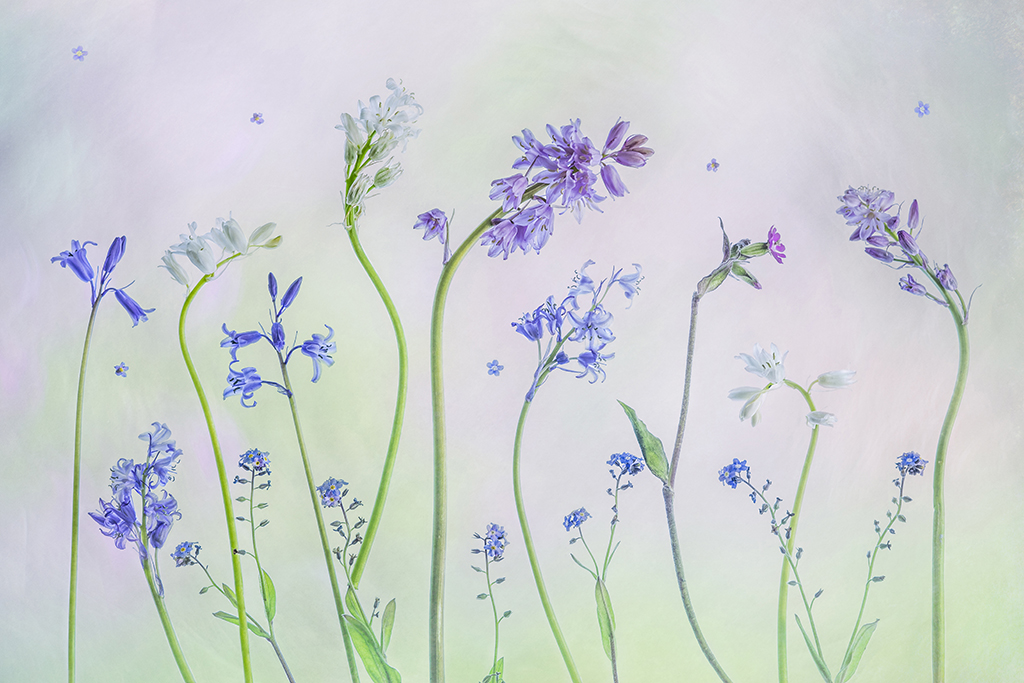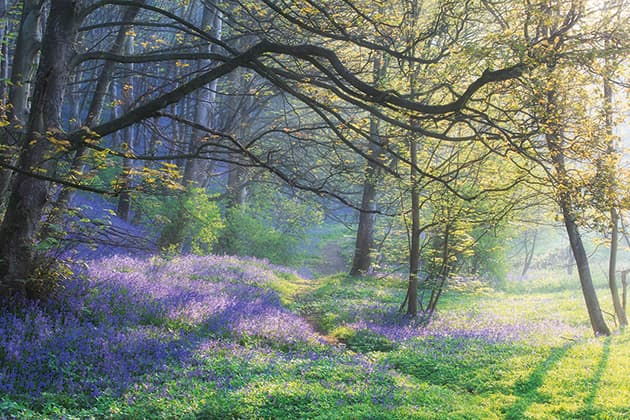‘One of the highlights of spring is the appearance of bluebells across our countryside,’ writes Robert Birkby. Here are some tips on how to photograph bluebells near you from Robert Birkby and AP.
‘Late April and early May tend to be the optimal times to capture bluebells at their best, and although much photographed, it really is difficult to resist those fabulous swathes of colour across our hills and woodlands.
‘At the same time, grass starts to grow more quickly and new leaves are beginning to appear on deciduous trees. After a long and dark winter these fresh, vibrant greens and blues form a magnificent palette of colour in landscapes.

A misty morning, a quiet spot and a creative eye are the keys to photographying bluebells successfully. Photo by Robert Birkby Photography
Some regard bluebell shots as clichéd, but with a little effort it’s possible to capture something more original. The opportunities are endless. Try low and high viewpoints, and adjusting depth of field, focal length and brightness.’
Top tips on how to photograph bluebells:
1. Early mornings in bluebell woods often produce the best results. Still and misty conditions are common at this time of year. Mist adds atmosphere and depth, while a carpet of bluebells is the icing on the cake.
2. The famous bluebell locations are popular, so you’ll likely be sharing your view with other photographers. But bluebells can be found in the most unlikely locations, so try to find your own untrampled patch.
3. Use the viewfinder or screen to carefully seek out a good composition. It could be that the trees are balanced in the frame or forming repeating patterns. Gaps between trees help pull the viewer into the scene.
4. Whilst a general zoom lens is a great lens choice, don’t forget to take some close-up or macro images of the intricate beauty of bluebells, here a macro lens will help. Choose a healthy looking specimen that is not in direct sunlight, otherwise highlights are lost at the edges.

Use a telephoto zoom lens, as the fully zoomed position to blur the background. Olympus OM-D E-M1 Mark III, OM System 40-150mm F4 at 85mm, 1/4000sec at f/4, ISO 200. Photo Andy Westlake
5. Use a telephoto zoom lens top create a photo of the bluebell, with a smooth blurred background, as this will make the image stand out in the photo.
6. Think about shooting creative images of bluebells, for example, you could create a flat-lay image of your favourite flowers, as created by Angi Wallace, below:

‘Immersing myself in the little details is a wonderful coping strategy for pain and symptom relief,’ adds Angi – See this article for more details.
Related reading:
- Best macro lenses for DSLR and mirrorless
- Complete guide to macro photography
- Guide to landscape photography







